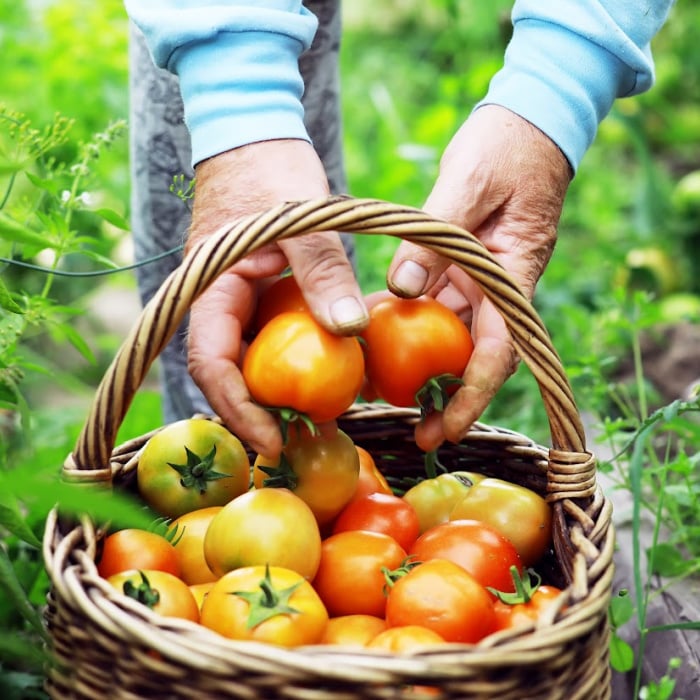Wouldn’t it be more enjoyable if you didn’t have to break your back tilling and turning over the garden beds every season?
Believe it or not, you can have a no dig garden that’s good for your health, your pocket, and the planet.

What Is No Dig Gardening?
No dig gardening is gardening without tilling or turning over your garden beds every year.
This is an excellent way of gardening based on the principles of minimal disturbance to the soil and leaving it in a less disruptive state.
Charles Dowding, an English horticulturist and author, pioneered the modern no dig and organic soil management idea.
With his 30 years of experience experimenting with the no dig concept, he found that the intensive dig cultivation is harmful to the garden soil. This promotes weed growth and it can lead to reduction in crop production.
Digging your garden up is not only labor intensive, it’s also not the best way to have a full harvest.
You Might Also Like: All About Squash Bugs
What Are The Benefits Of The No Dig Method?
Why are gardeners considering the no dig method of gardening?
Other than being a huge time saver:
No Disturbing The Soil
With the no dig method, you don’t have to till or completely remove the garden’s topsoil.
By not tilling the soil, you’re not disturbing all the microbial life in the soil. This means the plants will have a much better base to grow out of.
Easier To Harvest
This method allows easier harvest of crops, especially for root vegetables.
You don’t have to spend time digging the root crops out and replacing the soil. You just need to give them a gentle tug.
Improved Soil Structure
Earthworms and other living organisms create natural pathways and tunnels for your soil.
This will lead not only to better soil drainage, it also allows the roots to grow deeper, easier, which leads to better crops.
Weeds Are Easier To Spot And Remove
By maintaining a no dig garden, you can reduce the number of weeds. Fewer weeds means healthier soil life and a more productive garden
As you’re not tilling the soil, this kills off all the grasses and majority of the weeds that can cause issues in your garden. Now, that’s natural weed control!

No Dig Gardening For Beginners: How Does It Work?
With maintaining a no dig garden, you’re not disturbing the soil whenever you’re planting your new seedlings.
It’s all about taking care of the soil and not disturbing it as much as possible.
With the no dig gardening, you’re building it up rather than breaking it down with a shovel or tiller.
Here are the things that you need when creating a no dig garden, even for new gardeners:
Supplies That You Need
- Newspaper or thick cardboard (remove the tapes, labels or staples)
- Organic materials for mulch (compost, worm castings, peat moss or leaf moss)
- Top mulch (grass clippings, shredded leaves or weed free straw)
- Water
- Garden edging (optional)
- Lawn mower (optional)
Remove The Weeds And Grass
When preparing your own garden, the best start is: Using the lowest setting on your lawn mower, mow the new garden bed area.
If there are any weeds or grass in the area, pull or dig them out.
Add Garden Edging
If the garden area you’re building is surrounded by grass, it is best to edge it.
Edging your garden prevents weeds and grass from creeping in later on. There’s inexpensive black plastic edging or if you have more budget to spare, you can use brick or concrete edgers.
Cover The Bed
Cover the entire surface of the top of the soil with a thick cardboard or layers of newspaper. This process will help smother the grasses and weeds and kill them.
Make sure that the garden bed is fully covered and there are no holes where the weeds can find their way through.
Wet It
Once the spot is fully covered, spray water over the base layer until it is fully wet.
This will keep the top layer from blowing away and will also soften it to conform to the ground.
Pile The Organic Matter
Next is to add a thick layer of mulch like:
- worm castings
- well-rotted manure from animal manure
- compost
- peat moss
- leaf mold
on the soil surface. You can also create your own compost from wood chips, thick layer of straw or leaves.
The worms and other beneficial organisms from the soil will start digging tunnels and feed on the organic matter from the mulch and will leave beneficial waste for your plants.
During the process of adding mulch layering to the vegetable plots, the soil will get aerated naturally from the organic mulch and worms and will have good drainage and rich nutrients.
You Might Also Like: How To Start A Hydroponic Garden
Water The Garden Bed
The most important part of the preparation is to keep the raised bed consistently watered. This will retain the moisture longer.
Start Planting
The best part about the no dig gardening method is that you don’t have to wait to start planting on your dig garden bed!
Congratulations in exerting effort and hard work! Now, you can start planting straight to the garden bed with healthy soil or you can also give it some time to settle in.
The no till gardening method can help save you a lot of time as you don’t have to dig and turn over your garden beds every year – you just need to add a rich compost mulch!
Have you tried this method in the past?





Leave a Reply